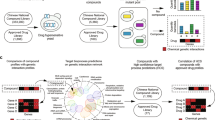Abstract
Information about biomolecular interaction networks is crucial for understanding cellular functions and the development of disease processes. Many diseases are known to be based on aberrations of DNA sequences encoding proteins with key functions in the cellular metabolism. Alterations in the respective proteins often lead to disturbances in biomolecular interactions caused by unbalanced stoichiometries, and thus result in alterations of molecule fluxes, cell architecture and signalling pathways. Drug discovery programmes have been designed to find promising chemical lead structures with the help of target-oriented bioassay systems. These are, in most cases, based upon the interaction of small molecules to specific macromolecular targets in vivo or in vitro, as exemplified by enzyme assays or small-ligand-based receptor systems. In addition, interactions between large biomolecules, such as proteins or nucleic acids, offer a huge arsenal of potential drug targets that can be addressed by small chemical compounds. This latter approach is gaining considerable attention because many potential target structures are becoming available through genomic research. Funnelling these new targets into high-throughput screening programs represents a major challenge for today's pharmaceutical research. An important outcome of the ongoing genome projects is the fact that the basic cellular structures, pathways and signalling principles show a high degree of conservation. Model organisms that are easily approachable by genetic, biochemical and physiological means can thus play an important role in the design of target-oriented screening systems. They offer the possibility to express individual proteins, nucleic acids or even more complex aggregates of biomolecules such as protein-interaction networks or transcription-initiation complexes, which can be addressed by small effector molecules in vivo. Combining these targets with biological signalling systems is an attractive way of creating robust cellular assay systems.
Similar content being viewed by others
Author information
Authors and Affiliations
Additional information
Received: 11 January 1999 / Received revision: 11 March 1999 / Accepted: 14 March 1999
Rights and permissions
About this article
Cite this article
Munder, T., Hinnen, A. Yeast cells as tools for target-oriented screening. Appl Microbiol Biotechnol 52, 311–320 (1999). https://doi.org/10.1007/s002530051525
Issue Date:
DOI: https://doi.org/10.1007/s002530051525




